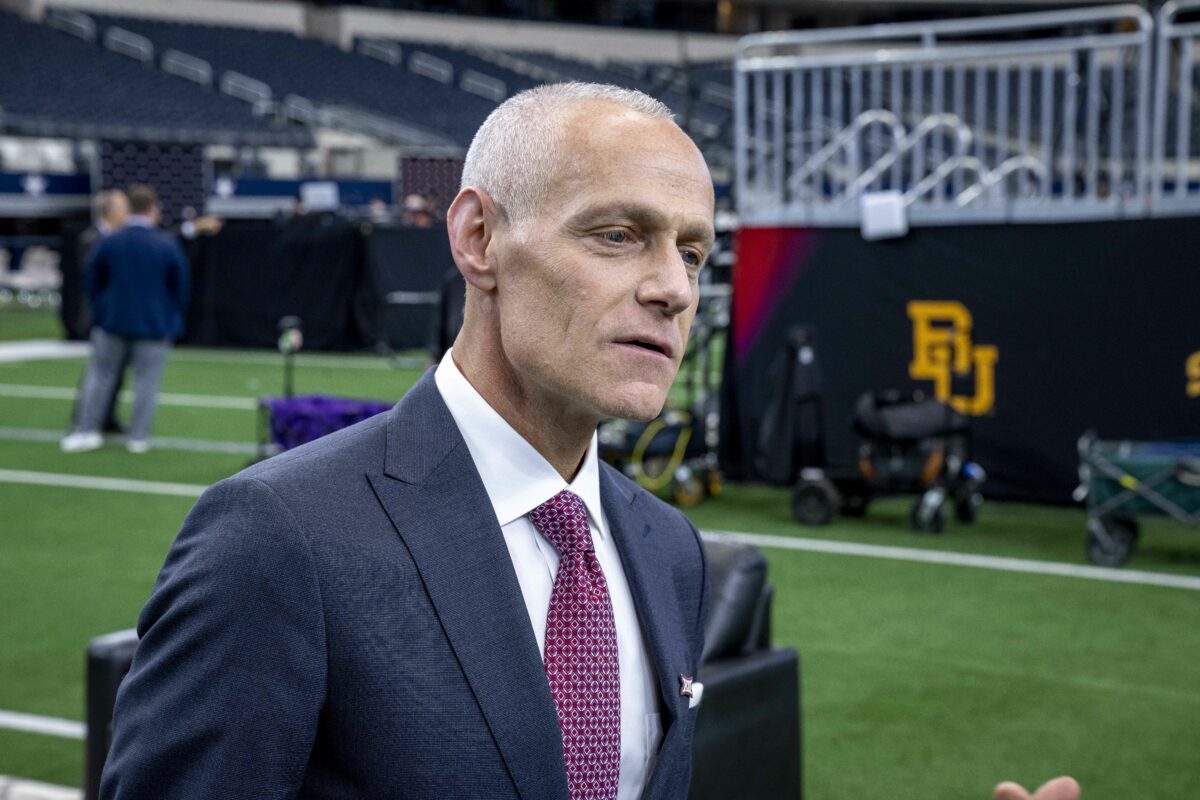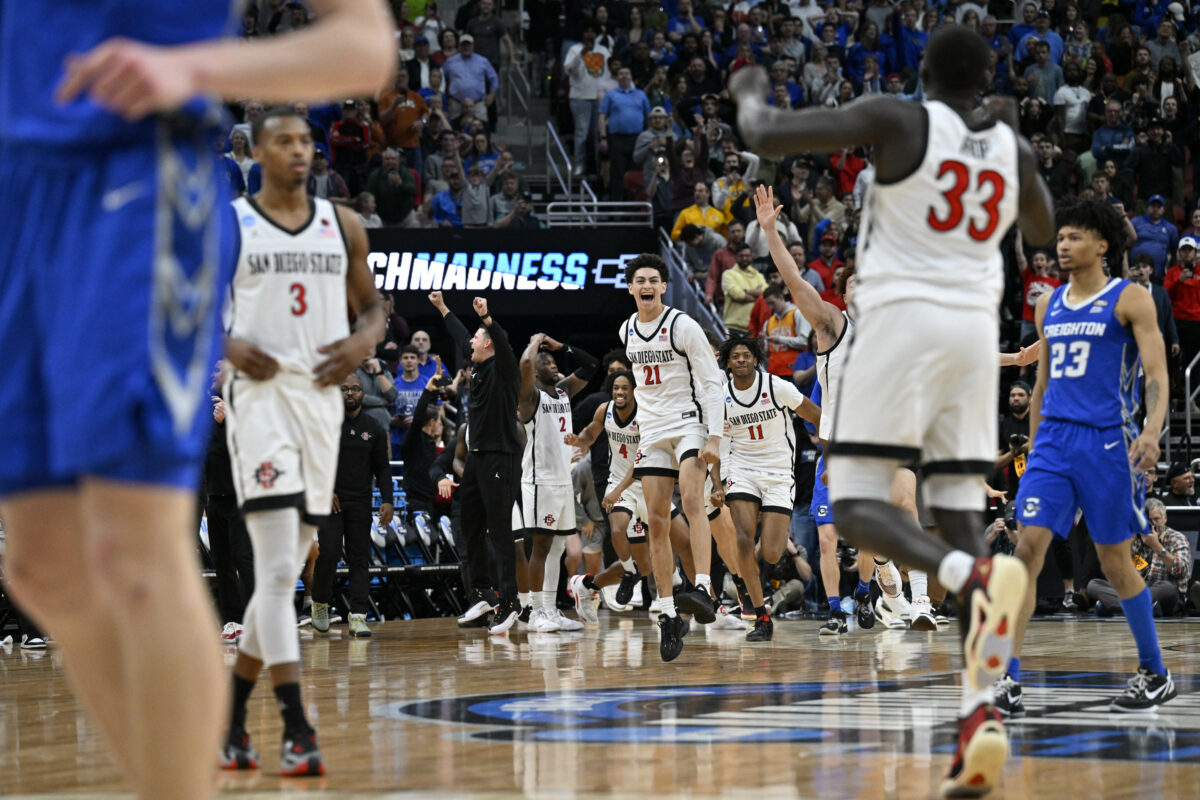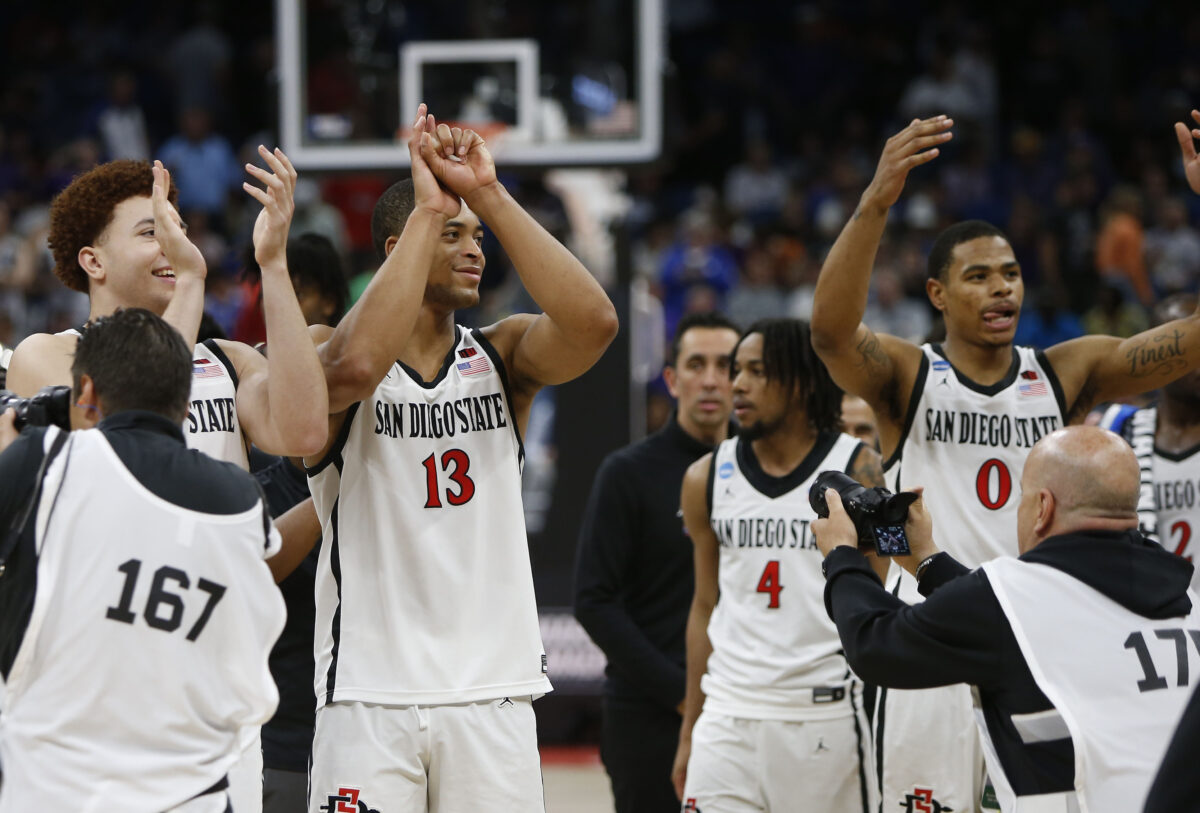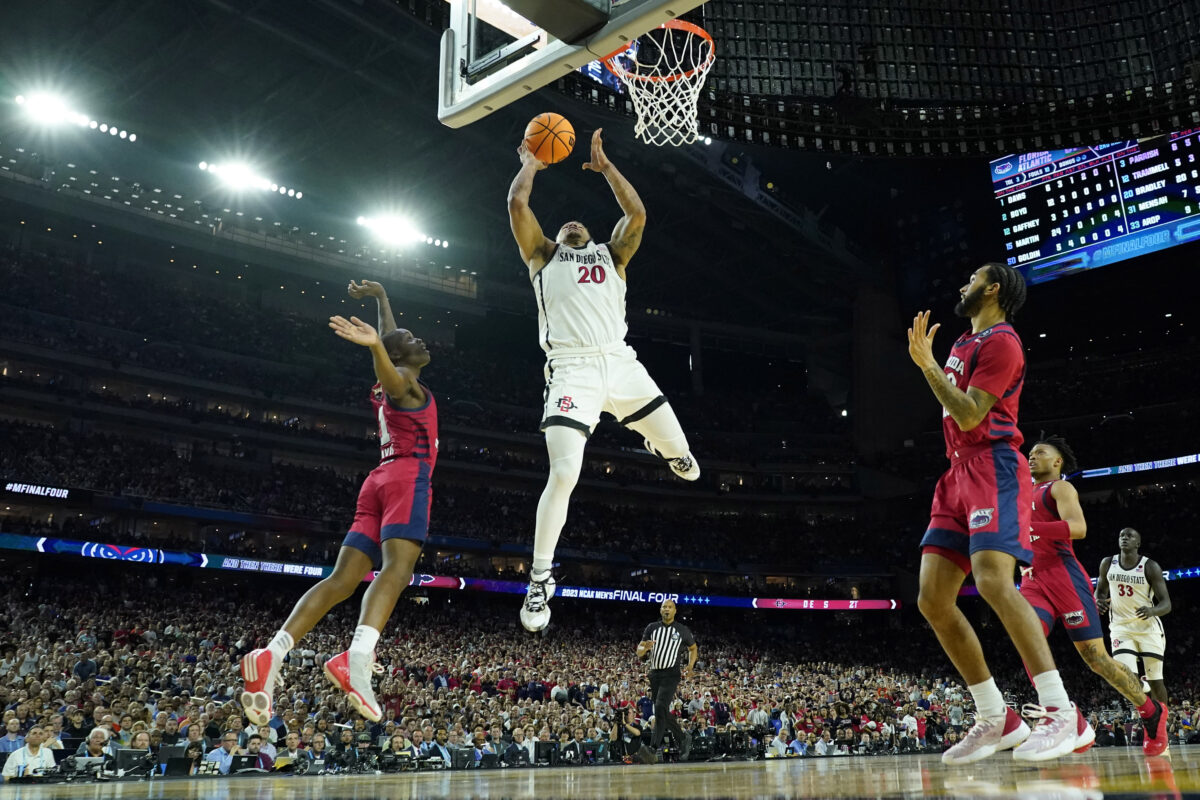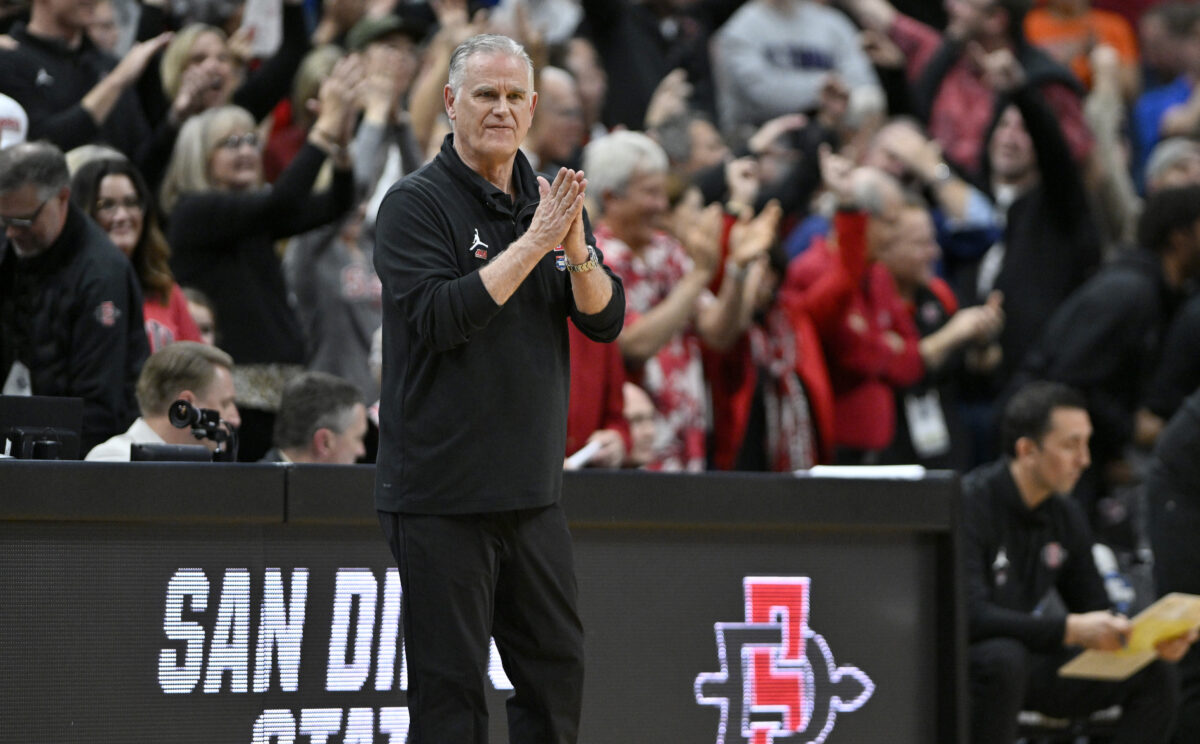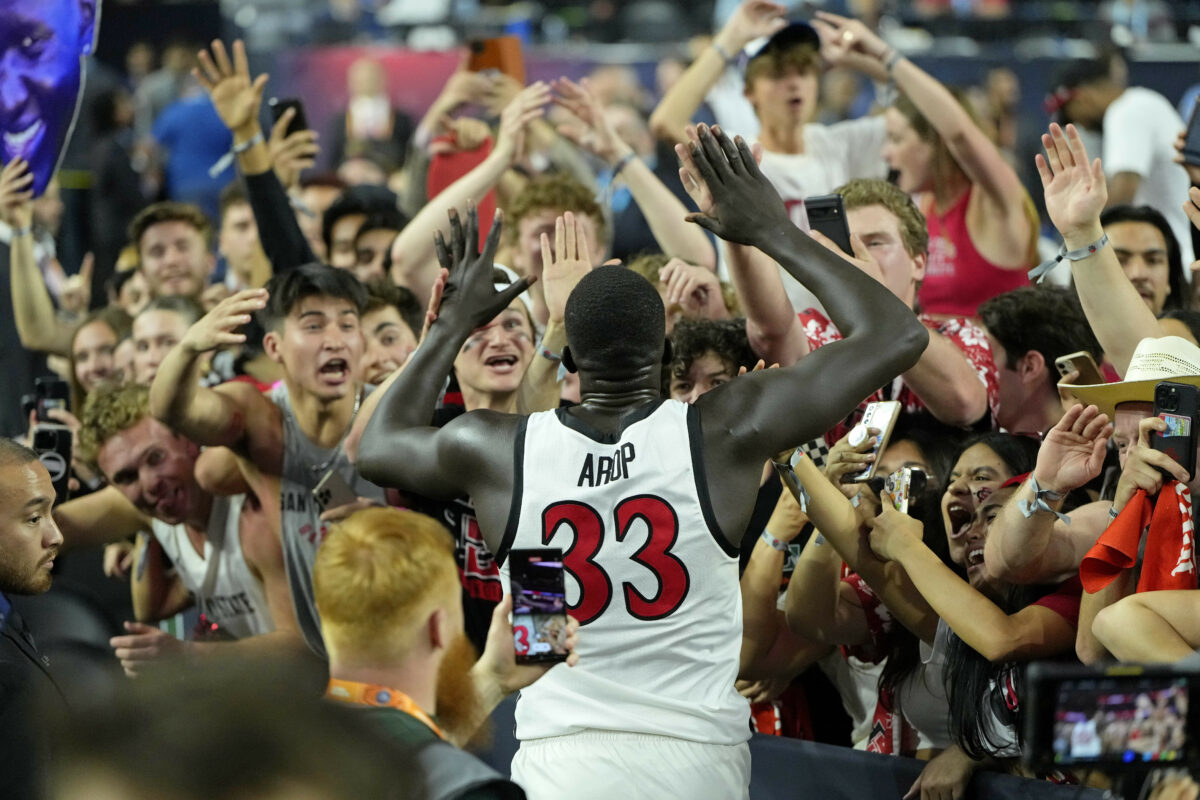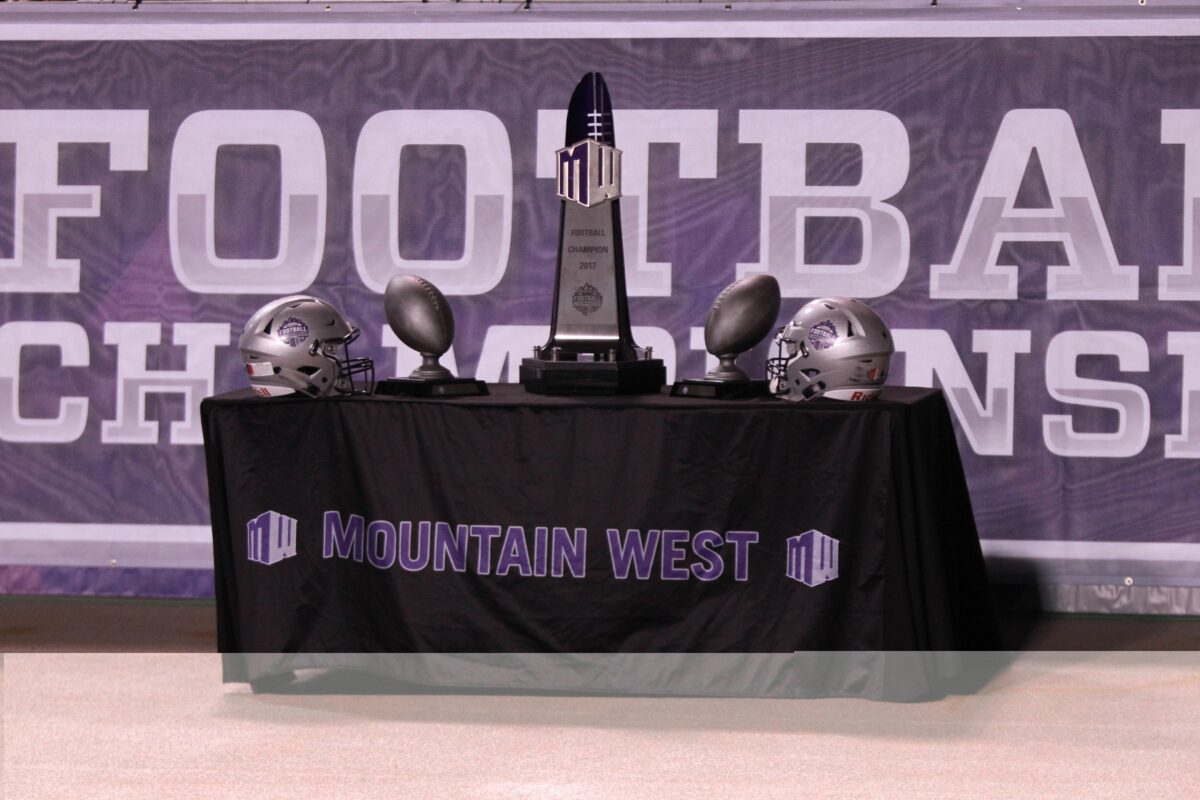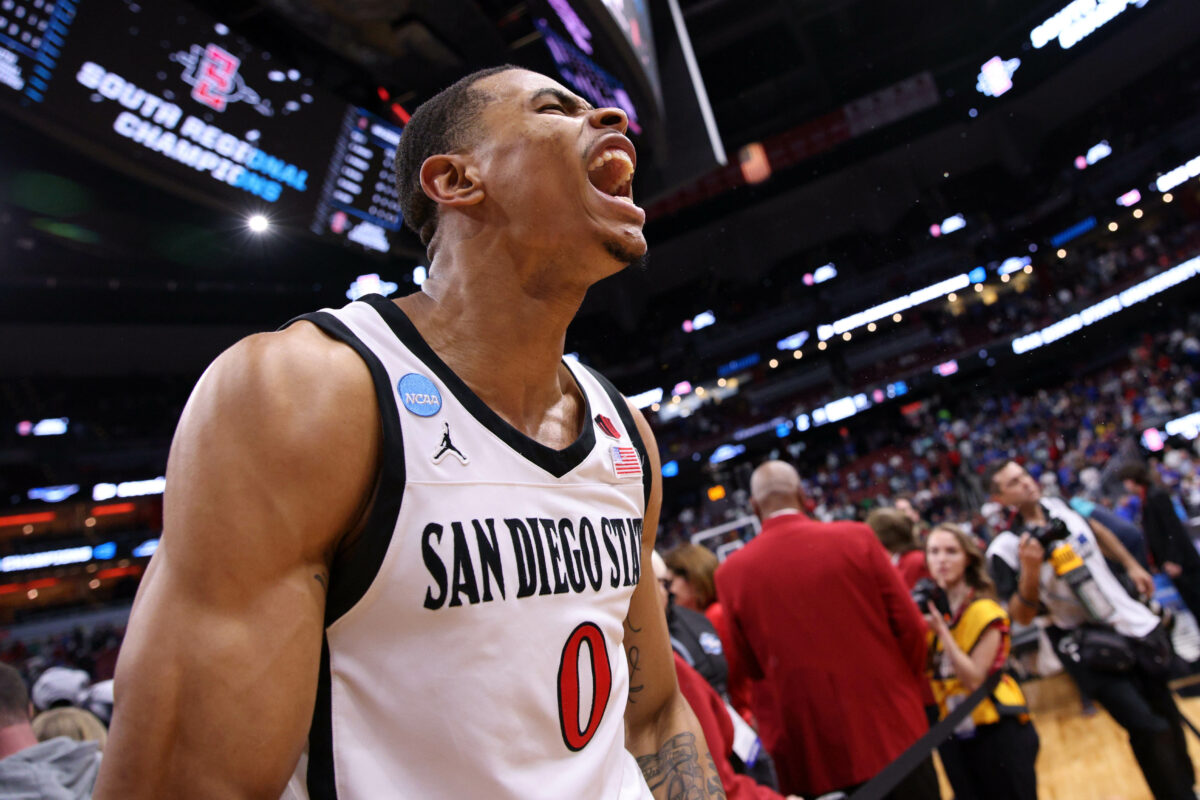[mm-video type=playlist id=01g1kx1m9c8rz2mjgq player_id=none image=https://mwwire.com/wp-content/plugins/mm-video/images/playlist-icon.png]
Tyson Degenhart Talks About His Expectations For Boise State
An Interview With Boise State Forward Tyson Degenhart
Contact/Follow @Michaelbraydaly & @MWCwire
Degenhart discussed his previous two seasons and his expectations for next season at Boise State
Since Boise State forward Tyson Degenhart joined the program in 2021, he emerged as a team leader and one of the top players in the Mountain West. As Degenhart enters his junior season, he is aiming for another successful season at Boise State.
Degenhart recently sat down with the Mountain West Wire for an interview about his recruitment process, previous two seasons, expectations, and more. Growing up in Washington state, Degenhart stood out as one of the best players in the region. By playing AAU basketball in elementary school with Boise State head coach Leon Rice’s son, Kade Rice, Degenhart formed an early connection with Boise State.
At a basketball camp prior to his junior year of high school, Boise State offered a scholarship to Degenhart. Ultimately, Degenhart committed to Boise State. When asked about his relationship with Coach Rice, Degenhart praised his head coach.
“He’s just a great dude to be around. He totally understands the players’ side of things, while also understanding the coaches’ side of things,” Degenhart said. “He’s been a great guy to be at the helm of our program, and a great guy anyone would want to play for.”
Boise State’s coaching staff also received praise from Degenhart for their offseason work. This offseason, Rice has been away from the program while he is working as an assistant coach for the USA Basketball Men’s U19 World Cup Team in Hungary. Boise State assistants Mike Burns and Tim Duryea have led the team through offseason workouts.
Based on the last two seasons, Degenhart has been successful playing for Rice and Boise State. Last season, Degenhart was the team’s scoring leader with 14.1 points per game. Degenhart was an All-Mountain West First Team selection in 2022-2023. He spoke about his improvements as a sophomore:
“I played a lot better in the post,” Degenhart said. “Just adding that to my game when I posted up, I knew I could score one way or another, whether it was me scoring or kicking it out to a teammate. That has just really helped our offense with such great shooters like [Marcus Shaver Jr.], Chibuzo [Agbo], Max [Rice], and Naje [Smith].”
The Broncos finished the 2022-2023 campaign with a 24-10 record and reached the NCAA Tournament for the second consecutive year. Boise State had an early exit in the NCAA Tournament with a loss to Northwestern. In the same tournament, fellow Mountain West school, San Diego State, reached the Final Four and national championship for the first time in program history. Degenhart was asked about watching San Diego State represent the conference throughout the tournament.
“It wasn’t necessarily a surprise [to see San Diego State go on a tournament run], but it was one of those things that was super cool for our conference to have a team that we play against twice a year to make it to the national championship game,” Degenhart said.
Degenhart complimented the success of San Diego State’s Darrion Trammell and Lamont Butler in the Elite 8 and Final Four. He highlighted San Diego State’s recent history under former head coach Steve Fisher and current head coach Brian Dutcher. The Broncos split the season series with the Aztecs last season.
For Boise State to return to the tournament for a third straight season and have similar success that San Diego State had, Degenhart will need to have another strong season. Degenhart outlined his personal goal for next season.
“My personal goal is to be Mountain West Player of the Year,” Degenhart said. “I was first-team last year and we still have a lot of great players in the league like Isaiah Stevens coming back, Lamont Butler, and Jaelen House. As long as I take care of business and help our team win, that could definitely be on the table.”
For next season, Degenhart’s role will slightly change. With the additions of transfer forwards O’Mar Stanley and Cam Martin, Degenhart is expecting to leave his position as the starting center and return to playing power forward in the starting lineup. As a power forward, Degenhart plans on expanding his mid-range game and working on his three-point shooting.
Boise State is returning several key players for the 2023-2024 season, and the team will be expected to compete for a Mountain West Championship. Degenhart believes that this team can make a postseason run.
“We are not going to cap anything, but we can make it to the Final Four, As a team, if we can get that first win out of the way and forget about us not winning a game in the tournament, we are a second weekend team. Everyone believes that.”
In addition to being a standout college basketball player, Degenhart recently added podcast host to his resume. He recently started “The Tyson Degenhart Show” where he interviews notable figures in Boise State Athletics. He partnered with Idaho Central Credit Union to start the show.
After his basketball career is over, Degenhart wants to transition to a career in broadcasting as a play-by-play announcer, color commentator, or host. Degenhart has been busy with preparing for the upcoming regular season and pursuing interests outside of basketball.
Before the end of the summer, Degenhart and Boise State will take a trip up to British Columbia to play three exhibition games against Trinity Western University, University of the Fraser Valley, and Thompson Rivers University in July and August. These three games will be played in Vancouver and Kamloops, British Columbia, Canada.


